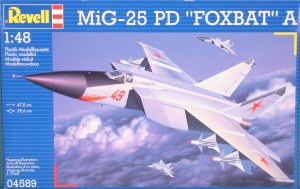
Revell 1/48 MiG-25 Foxbat A Kit First Look
By Michael Benolkin
| Date of Review | December 2005 | Manufacturer | Revell |
|---|---|---|---|
| Subject | MiG-25 Foxbat A | Scale | 1/48 |
| Kit Number | 4589 | Primary Media | Styrene |
| Pros | Best kit of the MiG-25 in 1/48 scale | Cons | Only kit of the MiG-25 in 1/48 scale |
| Skill Level | Basic | MSRP (USD) | $27.00 |
First Look
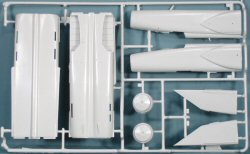 |
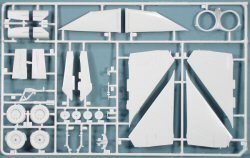 |
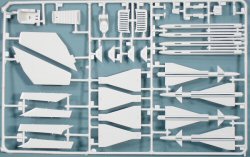 |
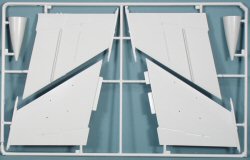 |
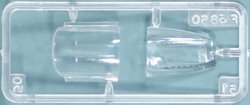 |
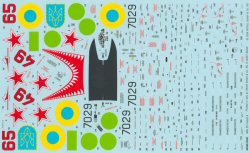 |
At the height of the cold war, Soviet Air Defense (PVO) pressed the Mikoyan Design Bureau (OKB) to develop an advanced high-speed interceptor. The threat posed by the Mach 2 B-58 Hustler was further complicated with the unveiling of the Mach 3 XB-70 Valkyrie bomber. PVO needed a better shield and they needed it yesterday!
In 1964, Mikoyan OKB developed the experimental design Ye-155, which combined a pair of high-powered Tumansky R15B-300 engines. When the West got its first view at Domodedovo in 1967, the aircraft was mistakenly identified by western analysts as the MiG-23 (which the Soviets did nothing to correct). Details started to accumulate about a fighter capable of Mach 3 that posed a significant threat.
Meanwhile, the US was developing its own Mach 3 interceptor, the YF-12, to counter growing threats from Soviet bomber developments. As the XB-70 program was cancelled and the corresponding aircraft on the Soviet drawing boards likewise went away, the MiG-25 and YF-12 were suddenly without Mach 3 threats. The US cancelled the YF-12 and retained the design and technology to become the SR-71 reconnaissance aircraft. The Soviets retained the MiG-25, but also spawned reconnaissance variants of this powerful aircraft as well.
By the time Viktor Belenko defected to Japan with his MiG-25P Foxbat A, the aircraft was viewed in the west as some invincible high-speed dogfighter. What they saw up-close was the true essence of Soviet design philosophy - keep it simple stupid! Where US aircraft tend to be over-engineered and almost "gold plated", Soviet aircraft were designed to get the job done as simply and inexpensively as possible. While the aircraft could attain Mach 3 (without weapons), the MiG-25 was a pure interceptor. There was no gun nor close-in missiles since the aircraft wasn't designed for close-in dogfighting. It was strictly intended to streak out to a potential target (enemy bomber) and blow it out of the sky with one of its four powerful missiles.
NATO designated the MiG-25P (the P denotes Perekhvatchik or interceptor) as the Foxbat A and it was one of these types that Belenko flew into Japan. As part of its modernization plans, many MiG-25s were updated with better sensors and weapons and these were redesignated as MiG-25PD (the D denotes Dorobotnyj or remanufactured) and NATO designated this version as the Foxbat E.
Here is an oldie but goodie. Revell-Monogram released the MiG-25P kit MANY years ago in 1/48 scale and remains today the only 1/48 scale styrene offering out there. Last year, Revell reissued the kit and I decided to get one for another look.
The box indicates the aircraft is a MiG-25PD, and decals are even provided for the PD as well. Unfortunately, the styrene wasn't updated to PD standards - this is still the original MiG-25P kit. What's the difference? Patience Grasshopper...
The kit is molded in light gray styrene and is presented on four parts trees, plus a small clear tree with the windscreen and canopy. The detailing on the kit is all raised, but if you look carefully at the sprue shots, you won't see any flash. As old as these molds are, Revell has done a good job in keeping these molds in good shape. Bravo Revell!
The cockpit is still an over-simplified affair that begs for an aftermarket replacement. Neomega used to offer a cockpit for this kit, but I understand Neomega has halted production for the time being. With a little scratch-building, you could fabricate a decent cockpit yourself, the hardest part will be replicating the KM-1M ejection seat, though Aires and a few other companies have offered KM-1 in resin.
Assembly of the boxy fuselage structure should be done carefully and with lots of dry-fitting to get the various parts trimmed and adjusted before gluing to minimize any filling later on.
One area that will need some attention is the exhaust nozzles. This kit is another where the turbine faces are literally molded to the end of the short nozzles with no afterburner spray bar detailing. These afterburner nozzles will need to be lengthened and detailed to get that correct look.
The intakes are also a potential problem in that the view is partially obscured by the Foxbat's unique airflow diverters partway down the intakes. There is no engine compressor face provided for the other side of the diverters, but you can also blank that area off to prevent viewing inside the hollow fuselage.
Assembly of the rest of the airframe is straightforward, though you'll want to check your references to tweak the landing gear and other details as required.
To get the airframe to look like a MiG-25PD, the one visible difference is the infrared search/track set located under the nose just aft of the radome. This is similar in shape to the IRST used on the MiG-23 and can be fabricated from styrene easily.
The kit is armed with four AA-6 Acrid missiles. Soviet designation for the missile is R-40. Standard loadout for the MiG-25P was two radar-guided R-40R and two infra-red R-40T missiles. The kit instructions indicate that both types are provided, though I see four R-40Rs on the trees. Converting two of these R-40Rs to R-40Ts is a simple matter of filing the shape of the nose to match the profiles in the instructions.
When the aircraft was updated into the MiG-25PD, one of the more common weapons loadouts was an R-40R and R-40T on the inboard pylons, and four R-60 (AA-8 Aphids) on twin-rail launchers on the outboard pylons. You'll have to acquire the R-60s and launchers elsewhere as these are not provided in the kit.
Markings are provided for three examples:
- MiG-25PD, Bort 49, Sharkmouth, Tula AB, 1990
- MiG-25PD, Bort 65, 146 Interceptor Regiment, Ukrainian Air Force, 1993
- MiG-25PD, Bort 7029, Libyan Air Force, 1986
Despite its age, this kit is still in great shape. If you build it straight out of the box, it will look like a MiG-25. For those afflicted with AMS, you'll want to rescribe the panel lines, rework the cockpit, engine intakes, engine afterburner section, add the IRST and updated armament, then you'll have a nice-looking MiG-25PD. Revell did a great job with these decals and you'll definitely want a few of these for your stash.
Recommended!
References:
- MiG-25 'Foxbat/MiG-31 Foxhound, Yefim Gordon, Midland Publishing Ltd, 1997, ISBN 1-85780-064-8







